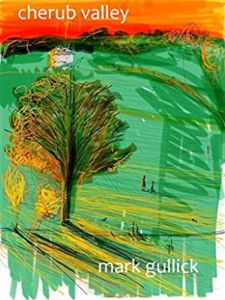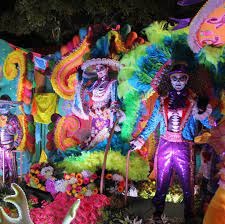The Counter-Currents Xmas Quiz
Posted By Mark Gullick On In North American New Right | Comments Disabled1,118 words
Christmas in Costa Rica was its usual low-key affair. What I like most of all is its simplicity. There are Christmas trees in the courtyards and bunting in the store opposite, but none of the materialistic vulgarity I remember from London. Nicest of all are the children’s toys in the shops, dollies for the girls and dinosaurs and trucks for the boys, with plastic farm sets for the little ones. Woke just never made it to Central America, and God knows what monstrosities are on the shelves of the United Kingdom.
I decided to break with tradition and cook — or at least heat — a special meal. I dutifully went out for turkey only to find that they don’t really live here. The only turkey I have seen is in cat food, which reminds me. So I bought a half-kilo of mince to make meatballs, and mince is always a big hit with Missy, the calico cat who adopted me six years ago. In a daring raid, however, she made off with a good deal of it and was discovered under the table, where she goes when she has caught a mouse and doesn’t want me to know. It is not convincing, as a cat, to pretend you have not caught a mouse when there is a tail poking out of your mouth. And then you eat it and are sick. And then Muggins here gets to clear it up. As cat-owners know, dogs have owners while cats have staff.
I worked on my book, wrote a couple of features, and was taken out for a very enjoyable meal by business associates. All in all, Christmas was enjoyable. But there was something missing . . .
I thought back to childhood. Was it the TV programs? I occasionally watch English Christmas specials from the 1970s: Morecambe and Wise, Steptoe and Son, The Two Ronnies, Chas and Dave. But they are all available on YouTube. Obviously it wasn’t toys (although I was worryingly tempted by the farm set), so what was missing? Of course: a Christmas quiz.
 [2]
[2]You can buy Mark Gullick’s novel Cherub Valley here [3].
Comics had them, the TV listing magazines had them, every national newspaper had at least a jumbo-sized crossword with 1970s graphics of tinsel and holly around the borders. If you have ever been a sub-editor, incidentally, and have had the misfortune to have to sub a giant crossword, I feel your pain. Sisyphus had it easy by comparison.
So, it concerns me that you might not have a quiz, and therefore I have provided one geared towards the eggheads of Counter-Currents. The format is a simple one. Ten statements follow, all concerned with art and culture. But only one of them is true!
If you Google the answers, you spoil everything and a sense of guilt will follow you for the rest of your days like a puppy-dog tied to a string. And I will know and I will find you and I will spit on your shadow, as the Roma gypsies do to curse someone in the street.
Take your time.
Mull each “fact.”
One from the ten is true, the others fabrication, deception, ruse, subterfuge . . .
And other words that mean naughty lies.
But there are enough outrageously fabricated clues you may recognize to point you in the right direction.
Choose well, my friends . . .
- The Mean Reds was the third studio album by English punk band Inside Job. Recorded in 1981 on a barge in Northumberland (which partially sank during recording), it failed to make the charts, but a live version of its most famous song, Never as Sad as Today, did reach number 22 in the UK charts in 1982.
- Paul Callum’s 1999 novel, A Ghost Story with No Ghosts, won the Henry James Award for best debut in the supernatural thriller category by the largest voting margin in the award’s 44-year history. It was filmed in 2004 and starred Jodine Palmerstone as the mentally unstable heroine.
- Los Brujos was the second film by Central American director Hector Camenéz after his triumphant debut, The Kindest Man. Released in 1997, Los Brujos centers around a group of sixteenth-century Nicaraguan witches who fall in love with the same man. It was nominated for a second-class Palme d’Or at Cannes in 1998.
- De occultus lumen (“On the Darkness of Light”) was reputedly the first book which had not been approved by the Catholic Church to be printed in movable type on an original Gutenberg printing press circa 1501-2. It is said to have given rise to the phrase “dissident literature.” The author is unknown, and although there is an opinion in classical scholarship that it was Boethius, this has been largely discredited, not least by Casaubon.
- Robert Walser, the Czech writer who was a friend of Franz Kafka, Max Brod, Herman Hesse, and Robert Musil, was found dead in a snowy field in 1956. His diagnosis of schizophrenia has been highly debated by literary historians, and his death is still a mystery.
- Toshiro Yamauchi’s painting Quixote Against the Windmills made the Japanese boy from Okinawa the youngest-ever winner of his country’s most prestigious art prize, the Twokawar Sorra, in 1992, at the age of 12. Then-Prime Minister Tajo Kontiki called it “a beautiful piece of cultural translation. It is as though the sad knight visited Japan.”
- It’s Time to Light the Lights: An Illustrated History of the Muppet Show was officially entered into The Guinness Book of World Records in 2007 as the bestselling biography of fictional characters ever published. Daniel and Denise McCreavie’s book sold over 14 million copies, translated as it was into 19 languages.
- Hungarian philosopher Jungan Omtan wrote the first chapter of his 1961 book En lkalke Rural Philosophia (On the Philosophy of Rural Life) on goatskin using a quill from a crow’s wing and ink made from quail’s blood. He told a Hungarian national newspaper that this was not a publicity stunt, but a genuine attempt to give “a philosophical voice to the people who still till the soil.”
- When the Costa Rican flag was designed after Central American independence in 1948, the President’s wife wished the colors to be exactly the same tones as those of the French tricolor, and these became Costa Rica’s national colors. The French recently changed the exact tone of blue in their flag. Costa Rica has now adjusted theirs accordingly.
- British Member of Parliament Rita Birch, who represents Bradley West in Yorkshire, is now officially the fourth-best female backgammon player in the United Kingdom. She lost the third/fourth place playoff rubber to ex-champion Julia Paraswa, but is still ranked the best-achieving British woman politician at the famous board game.
Cast your vote in the comments section. The winners get to fly to Costa Rica, at their own considerable expense, and clean my apartment, which is frankly a disgrace.
* * *
Like all journals of dissident ideas, Counter-Currents depends on the support of readers like you. Help us compete with the censors of the Left and the violent accelerationists of the Right with a donation today. (The easiest way to help is with an e-check donation. All you need is your checkbook.)
For other ways to donate, click here [4].
